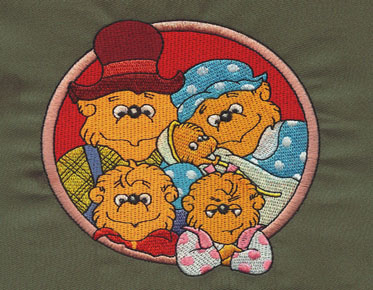Key Considerations for Working with Connection Threads in Embroidery Digitizing
When digitizing files for embroidery designs,
connection threads play a crucial role in maintaining design integrity and
ensuring functionality. They serve to link various elements within the design,
keeping the embroidery intact. In this article, we will explore some key
considerations for working with connection threads in digitizing files. By understanding and implementing these
factors, you can enhance the quality and durability of your embroidery
digitizing services.
I. Understanding Connection Threads:
1. Definition: Connection threads refer to the
stitches used to link different elements within an embroidery design, such as
letters, shapes, or objects.
2. Purpose: The primary purpose of connection threads is to maintain design continuity, preventing gaps and preserving the overall structure of the embroidery.
II. Significance of Proper Connection Threads:
1. Design Integrity: Connection threads ensure
that the elements within the embroidery design
are securely linked, preserving the intended appearance and preventing
distortion.
2. Stitch Durability: Well-placed connection threads contribute to the strength and longevity of the embroidery, minimizing the risk of loose threads or unraveling.
III. Factors to Consider when Working with Connection Threads:
1. Thread Thickness: Select an appropriate
thread thickness based on the design and fabric. Thicker threads offer more
strength, while thinner threads are ideal for intricate details in embroidery
designs.
2. Thread Color: Choose thread colors that
complement the design and fabric, ensuring seamless blending of the connection
threads with the overall aesthetic.
3. Stitch Length: Opt for shorter stitch
lengths for connection threads to achieve a secure connection while minimizing
the visibility of the stitches. You can also turn to professional digitizing service for help.
4. Underlay Stitches: Properly placed underlay
stitches beneath the connection areas can enhance stability and prevent
puckering or distortion in the fabric.
IV. Best Practices for Working with Connection Threads:
1. Review the Design: Before digitizing,
carefully examine the design to identify areas that require connection threads
and plan their placement accordingly.
2. Strategic Connection Points: Strategically
determine the connection points within the design to facilitate a smooth flow
and minimize the number of connection threads required.
3. Test and Adjust: Stitch out test samples to evaluate the effectiveness of the connection threads in your embroidery digitization services. Making necessary adjustments to thread thickness, stitch length, and underlay stitches is crucial for achieving optimum results. By carefully examining the test samples, you can assess how well the connection threads maintain design integrity and ensure the functionality of the digitized embroidery designs. This step allows you to fine-tune your embroidery digitizing services and make any necessary improvements for exceptional outcomes.
Conclusion:
When working with connection threads in
digitizing files for embroidery designs, attention to detail and a thorough
understanding of the design are paramount. By considering factors such as
thread thickness, color, stitch length, and underlay stitches, you can create
digitized designs that are visually appealing and durable. Regularly reviewing
and testing your designs will ensure optimal outcomes for your embroidery digitizing services.
FAQs:
1. How many connection threads should I use in
my embroidery design?
The number of connection threads required
depends on the complexity of the design and the elements that need to be
linked. Aim for a balance between maintaining design integrity and minimizing
excessive stitching.
2. Can I use the same color for connection
threads as the main design?
While using the same color is possible, it is
recommended to choose a slightly darker or lighter shade to subtly
differentiate the connection threads from the main design elements.
3. Are connection threads necessary for all
embroidery designs?
Connection threads are essential for designs
that have separate elements or intricate details. They help maintain the
structure and prevent gaps or distortion. However, simpler designs may require
fewer or no connection threads.
Remember, mastering the art of working with
connection threads requires practice and experience. Embrace experimentation,
learn from your results, and continuously refine your embroidery digitizing techniques to achieve outstanding design
outcomes.



